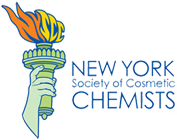Looking back at the elegant and artistic cosmetics containers produced since the time of Ancient Egypt and throughout the ages, it is easy to see that the design of the vessels and the aesthetic of the materials with which they were made, to both the producers and consumers of cosmetics, were just as valued as the formulations held within. This had held true to today, although the technology and materials used to package and protect cosmetics has advanced far beyond ivory jars and gemstones vials, and the consumers positive perception of a products relies not just its package design, but the functioning of the package in protecting the internal environment, and now also the external environment.
Over the last century, new materials have been invented that have improved that former function of packaging, which primarily is preventing biological, chemical, and thermal degradation, as well as damage by radiation (such as sunlight), pressure, and human interaction. Much of this is achieved through barrier protection, which is the establishment of a controlled atmosphere within the container to protect the product from oxygen, water vapor, microbes, dust, and other elements in order to ensure it stays clean, fresh, and most importantly safe.1
As stated, however, now the function of packaging has expanded even beyond just its effectiveness at barrier protection and the beauty of its design, and the positive impact on environmental health and sustainability by the material out of which they are made and the processes of production are equally as important. This was heralded by a radical change in the consumer, notably the rise of the millennial, who now have an extreme conscientiousness to the environmental friendliness of the packaging.2
The cosmetic industry has started producing packaging that is recyclable, using materials that have already been recycled and repurposed for packaging, and even materials that are biodegradable. Recyclables have long been a trend within cosmetics packaging – Burt’s Bees offers a lipstick that can be returned for recycling, and Clean Reserve’s glass perfume bottles are 100% recyclable, while Method’s hand soap bottles are produced with plastic recovered from the ocean.2
However the most recent development in this regard is biodegradable packaging, which decomposes in the environment and are made from naturally-derived materials. Research groups are now actively developing materials such as a film made from cassava starch, glycerol, and green tea extracts that was presented in Carbohydrate Polymers,3 and patents are being issued for items like Eco Vision’s ‘Eco Jar’, made from waste paper and which features compostable barrier films and coatings that maintain package integrity.4
However, raw materials used in such recycled and biodegradable packaging were still produced in environmentally detrimental ways – especially plastics – but ironically, a solution has been found in bacteria. Until today bacteria have been the mortal enemy of cosmetics producers, with them waging a war against microbes to keep them out of their products. But now, an alliance has been struck, as genetically engineered bacteria are being used to produce polymers for packaging in an eco-friendly way that is appealing to conscious consumers. Normally, one would use packaging to prevent the growth of bacteria, but in a poetic twist of fate bacteria are being used to ‘grow’ packaging!
Researchers working for Genomatica, Inc. in San Diego have genetically engineered E. Coli to secrete 1,4-butanediol (BDO), a precursor compound in plastic production, using only sugars and water, a far more sustainable process than the usual methods using petrochemicals.5 Even better, bioengineering not only can prevent damage to the environment, but can also address pollution that has already occurred. At the Karlsruhe Institute of Technology, microorganisms are being used in similar fashion to produce the polymer polyhydroxybutyric acid (PHB), but using CO2 as a raw material, reducing the concentration of the greenhouse gas in the atmosphere.6
In tandem with these developments, equally tiny though synthetic nanoparticles are also being engineered and incorporated into polymeric materials to improve the functioning of cosmetic packaging, improving the gas barrier as well as mechanical and thermal protections, while leading to a decrease in raw materials necessary for packages, and thus reducing the environmental impact of producing multiple package layers as opposed to the monolayer afforded by this advanced nanotechnology.7
Until recently, though, the funding required to develop these novel, advanced technologies as well as the overall cost of their production and incorporation into packaging used by most cosmetic brands was a significant barrier to its mainstream adoption in the industry.
However, in an interview with Cosmetics Design just last year, Scott Cassel, founder and CEO of the Product Stewardship Institute, spoke to how there will now be a competitive advantage in marketing for brands that start to value and make use of sustainable and eco-friendly packaging and the processes used to produce it, as they will be in the favor of the increasingly dominant millennial consumer segment.8 Making use of more efficient waste-reducing technologies for packaging production not only reduces cost for governments and taxpayers, but is also beneficial to cosmetics business, as wasted materials and energy in inefficient production otherwise translates to a loss of money.8 The process of producing BDO using bacteria requires at least 30% less energy than traditional methods, while the price of production with oil or gas related processes has increased alongside the cost of dwindling fossil fuel-based materials.5
In sum, utilizing the sustainable processes and new, eco-friendly technology that were previewed above should not only now save companies money in the long run, but afford taxpayers more money to contribute to the cosmetics industry and market, which they will be more and more willing to do as brands align with their values of sustainable and eco-friendly packaging.
References:
- Cosper, A. (2016, September 16). Purposes of Cosmetic Packaging. Retrieved January 9th, 2018, from https://www.desjardin.fr/en/blog/purposes-of-cosmetic-packaging
- Matusow, J. (2016, April 28). Simply ‘Green’ Packaging. Retrieved January 10th, 2018, from https://www.beautypackaging.com/issues/2016-04-01/view_features/simply-green-packaging/
- Medina-Jaramillo, C., et. al. (2017, November 15). Active and smart biodegradable packaging based on starch and natural extracts. Carbohydrate Polymers 176, 187-194. Retrieved from https://doi.org/10.1016/j.carbpol.2017.08.079
- Payne, Craig. (2011, June 27). Eco Vision Biodegradable Cosmetics Jar Awarded U.S. Patent. Retrieved January 10th, 2018 from http://www.naturalcosmeticnews.com/green-packaging/eco-vision-biodegradable-cosmetics-jar-awarded-u-s-patent/
- Biello, D. (2008, September 16). Turning Bacteria Into Plastic Factories. Retrieved from https://www.scientificamerican.com/article/turning-bacteria-into-plastic-factories-replacing-fossil-fuels/
- Karlsruhe Institute of Technology. (2016, November 21). Microbes produce organic plastics from flue gas, electricity. Retrieved January 14th, 2018 from https://www.sciencedaily.com/releases/2016/11/161121094118.htm
- Aimplas Plastics Technology Centre. (2016, January 11). Plastic nanotechnology for safer, more eco-friendly and competitive cosmetic packages. Retrieved January 13th, 2018, from http://www.aimplas.net/blog/plastic-nanotechnology-safer-more-eco-friendly-and-competitive-cosmetic-packages
- Utroske, D. (2017, April 18). Can sustainable beauty come to terms with cosmetics and personal care packaging waste? Retrieved January 12th, 2018, from https://www.cosmeticsdesign.com/Article/2017/04/19/Can-sustainable-beauty-come-to-terms-with-cosmetics-and-personal-care-packaging-waste

Matthew Brooks, Boston University, B.A. Chemistry 2019. A third-year student of chemistry at Boston University and fragrance consultant at Sephora, Matthew plans to enter the cosmetic industry upon graduation, where he hopes to work in product development and formulation. His recent areas of interest and study include natural products and organic chemistry, polymers and raw materials, ‘green’ chemistry, sustainability, and environmental protection.

